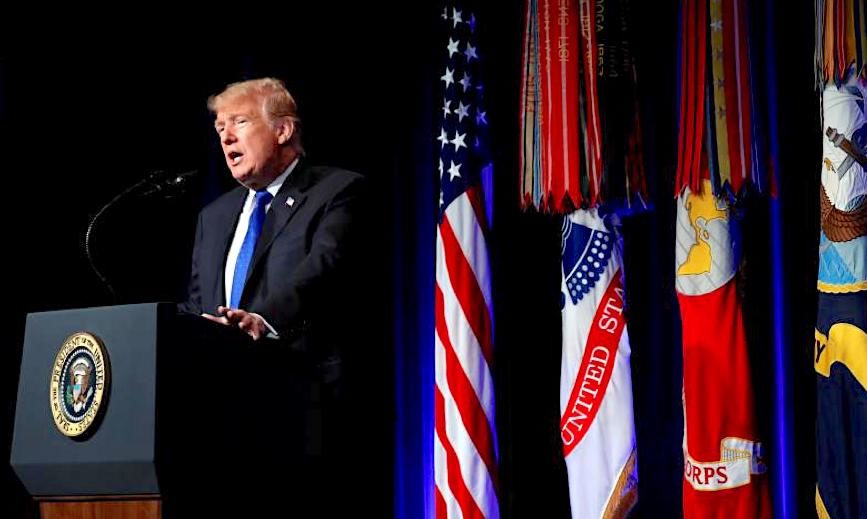
© ReutersmediaPresident Trump speaks during Missile Defense Review at the Pentagon.
President Donald Trump was unveiling a revamped U.S. missile defense strategy on Thursday that singles out North Korea as an ongoing and "extraordinary threat," seven months after he declared the threat posed by Pyongyang had been eliminated.
The Missile Defense Review is a sweeping examination of efforts to shield the United States from missile threats. It singles out concerns about advancing capabilities by North Korea, Iran, Russia and China. Acting U.S. Defense Secretary Patrick Shanahan acknowledged the threat from those countries, and noted that
North Korea's missiles remain a "significant concern." The document was even stronger. "While a possible new avenue to peace now exists with North Korea, it continues to pose an extraordinary threat and the United States must remain vigilant," the report said in its executive summary.
For Trump, who is trying to revive efforts to persuade North Korea to abandon its nuclear arsenal,
the report's release came at an awkward moment. Three North Korean officials, including the top envoy involved in talks with the United States, are booked on a flight to Washington, suggesting possible movement towards a second summit between Trump and North Korean leader Kim Jong Un, according to South Korean media.
The Missile Defense Review also
recommended studying experimental technologies, including prospects for
space-based weaponry that might be able to shoot down enemy missiles - a throwback to Ronald Reagan's "Star Wars" initiative in the 1980s.
"Space, I think, is the key to the next step of missile defense," a senior Trump administration official told reporters ahead of the document's release, speaking on condition of anonymity. "A space-based layer of sensors is something we are looking at to help get early warning and tracking and discrimination of missiles when they are launched." The official stressed that the viability of space-based missile defense weaponry was only being studied and no decisions had been made.
The investments come on top of previously announced
U.S. plans to increase the number of ground-based interceptors over the next several years, hiking the number positioned at Fort Greely, Alaska to 64 from 44.
U.S. military officials have said U.S. missile defenses are primarily designed to counter attacks from countries with more limited arsenals, like North Korea,
which U.S. intelligence officials believe is still advancing its nuclear program despite a halt to missile launches last year.Pentagon officials contend that U.S. missiles defenses are too few to be able to counter a first-strike on the U.S. homeland by a major nuclear power like Russia or China. Washington hopes those countries will instead be deterred from attacks by America's nuclear arsenal.Still, Russia views U.S. missile defense advances as a threat and
Trump's report is likely to stoke tensions with Moscow.China has also alarmed the Pentagon with advances in
super-fast "hypersonic" technology that could allow Beijing to field missiles that are far harder to detect.
In a report earlier this week that singled out the hypersonic threat,
the Pentagon said China's military was "on the verge of fielding some of the most modern weapon systems in the world." "In some areas, it already leads the world," the report said. U.S. officials, including Undersecretary of Defense for Research and Engineering Michael Griffin, believe a space-based sensor layer could help detect missiles moving at hypersonic speeds.
Comment: Russia, as well as China, has the hypersonic technology and has tested it with successful results.
1 /16/2019 According to Zero Hedge: